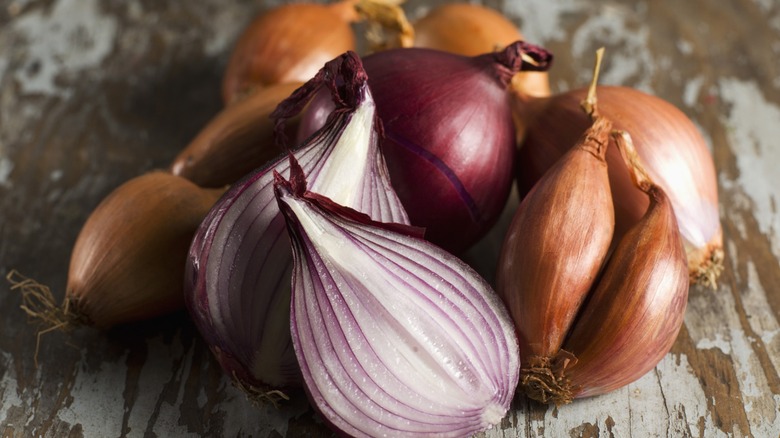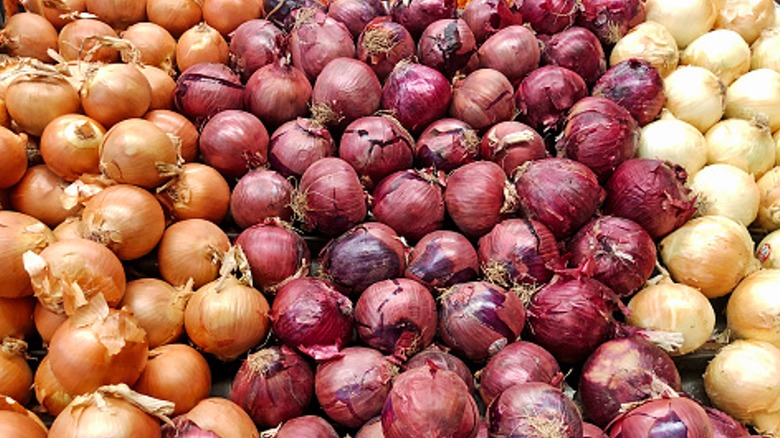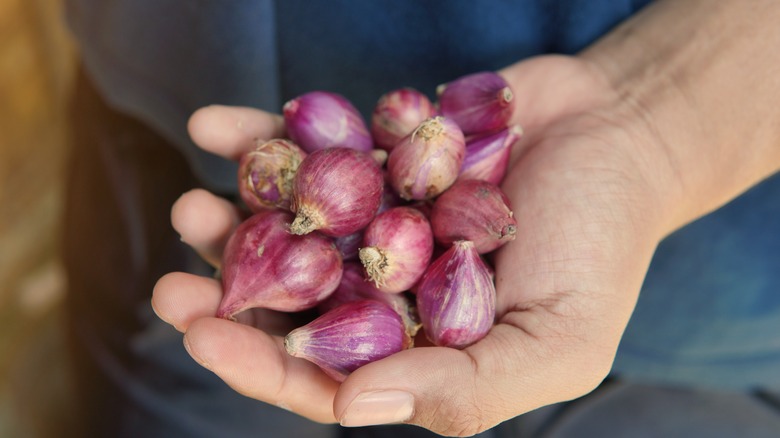Are Shallots Really All That Different From Onions?
Shallots and onions have a lot in common, to say the least. With their fragrant flavors, both omnipresent supporting ingredients in the culinary world — you will likely see one or the other in a savory recipe. They look similar to each other, and they often neighbor one another in the produce section of the grocery store. However, despite their common traits, shallots and onions are not one and the same.
It is no coincidence that a shallot essentially looks like a miniature onion. Their similar appearances can be attributed to the fact that both vegetables are part of the Allium genus. This group includes other pungent vegetables and herbs like garlic, chives, and scallions –allium is the fancy umbrella term for all the vegetables that can make you cry. Despite their common roots, shallots offer a different flavor and texture from their onion cousins. Understanding and appreciating the unique properties of each vegetable can help ensure they are best put to use in cooking.
Onions have layers of potential
Whether you are a fervent foodie or a chronic cooking novice, you likely know how ubiquitous onions are. They are a true culinary powerhouse. There are many different varieties, like white and yellow onions, red onions, and sweet onions. Each type has a slightly unique flavor and best use. Red onions, for instance, have a strong, sharp taste when raw. They are the perfect choice for those who prefer the stronger flavor to slice and slap onto a sandwich or salad. Yellow onions, on the other hand, are much more mild and neutral. Their flavors come out most under the caramelization process.
Generally speaking, though, all members of the onion family have pungent, fragrant flavoring properties. You can pickle them, roast them, or serve them raw. No matter what onion you use or how you use it, your onions will undoubtedly make their presence known.
A spiel on shallots, and what sets them apart
Shallots, like onions, come in multiple varieties — pink shallots, gray shallots, and white shallots, galore. Like onions, they function as aromatics in whatever dishes they adorn.
Shallots contrast onions in many ways. For example, each shallot grows in a group of bulbs (similarly to garlic), whereas onions grow individually. In terms of taste, shallots have a subdued, mild flavor. Perhaps counterintuitively, their strength in use comes from their lack of strength in flavor. If you have especially sensitive taste buds, you may find that shallots make a good substitute for onions. They deliver the same an extra layer of depth in flavor but without the pungency that some may find overwhelming in onions. While, overall, they are versatile and easy to work with, consider heeding the tips you'll need when cooking with shallots. Shallots and onions may be different vegetables, but their most important commonality is that they make food better.


